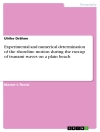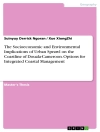In 2011, despite continued developments in forecasting, tracking, and warning technology, the United States was hit by the deadliest tornado season in decades. More than 1, 200 tornadoes touched down, shattering communities and their safety nets and killing more than 500 people—a death toll unmatched since 1953. Drawing on the unique analysis described in their first book, Economic and Societal Impacts of Tornadoes, economists Kevin M. Simmons and Daniel Sutter here examine the factors that contributed to the outcomes of such tornadoes as the mid-April outbreak that devastated communities in North Carolina, the “Super Outbreak” across the southern and eastern United States in late April, and the single, mile-wide funnel that touched down in Joplin, Missouri, among others, in late May.
表中的内容
The 2011 Tornado Season in Historical Perspective.- Southeastern Vulnerability and the April 27-28 Tornado Outbreak.- Extreme Vulnerability Versus Extreme Weather in the 2011 Season.- Doppler Radar, Warnings, and Electric Power.- Recovery from Tornadoes.- Lessons Learned and the Path Forward.
关于作者
KEVIN M. SIMMONS is the Corrigan Chair of Economics at Austin College. In 2009 he was selected as a Fulbright Scholar to work with the International Center for Geohazards in Oslo. He holds a Ph.D. in Economics from Texas Tech University where he developed a research interest in the economics of natural hazards. His articles are widely cited and have appeared in journals from a variety of academic disciplines including engineering, sociology, law, meteorology as well as economics.












